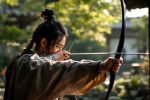Martial Arts Around the World
Discover the dynamic world of martial arts! From ancient Kung Fu to modern MMA, explore diverse combat styles and their rich histories. Uncover the philosophies, techniques, and cultural significance of martial arts across the globe, including Taekwondo, Judo, and Brazilian Jiu-Jitsu. Start your martial arts journey today and enhance your mind, body, and spirit. Read on to learn more!
Important information

- Martial arts styles across the globe offer diverse techniques, philosophies, and histories, ranging from striking and grappling to weaponry.
- These disciplines promote not only self-defense skills but also personal growth through discipline, focus, respect, and increased self-confidence.
- Traditional martial arts emphasize cultural traditions and philosophical values, while modern styles prioritize sport and competition, with hybrid systems blending various techniques for maximized combat effectiveness.
- Training methods involve striking, grappling, kata (forms), sparring, and conditioning, all designed to improve physical and mental prowess.
- Martial arts are deeply intertwined with cultural heritage, preserving traditions, values, and histories through physical practice and philosophical principles.
Introduction to Martial Arts Around the World
Martial arts offer a diverse world of combat systems, providing not only self-defense but also personal growth. Developed across various cultures, each art boasts unique techniques, philosophies, and histories. From the striking arts like Japanese Karate and Korean Taekwondo to grappling styles like Brazilian Jiu-Jitsu, the stand-up fighting of Thai Muay Thai, and the diverse systems of Chinese Kung Fu, these disciplines often intertwine with spiritual beliefs and reflect their cultural origins. Beyond physical fitness and self-defense, martial arts cultivate personal development. They promote discipline, focus, respect, and self-confidence, fostering a well-rounded approach to mind, body, and spirit.
Martial Arts by Regional Origin
Martial arts traditions from around the world offer a diverse range of styles, each reflecting its unique cultural origins. Laamb originates from Senegal, while Nuba wrestling hails from Sudan. European martial arts include French Savate kickboxing and Portuguese Jogo do Pau stick fighting. Asia boasts a rich variety of traditions, such as Chinese Kung Fu, Japanese Karate, and Korean Taekwondo. From the Americas, we have the captivating Capoeira from Brazil and Angola, and the dynamic, ever-evolving mixed martial arts (MMA), a fusion of various combat techniques.
African Martial Arts
- Laamb (Senegal),
- Nuba wrestling (Sudan).
European Martial Arts
- Savate (France),
- Jogo do Pau (Portugal).
Asian Martial Arts
- Kung Fu (China),
- Karate (Japan),
- Taekwondo (Korea).
Americas Martial Arts
- Capoeira (Brazil/Angola),
- Mixed Martial Arts (MMA).
African Martial Arts
African martial arts encompass a wide range of fighting styles, each developed within its own cultural context across the continent. From Sudanese Nuba wrestling to Angolan Engolo and Senegalese Laamb, these combat systems often blend grappling, striking, and weaponry, reflecting Africa’s rich history. Beyond combat, these arts played key roles in rituals, self-defense training, and physical fitness. Many techniques even imitate animal movements. Today, these ancient practices are experiencing a resurgence in modern forms, providing effective methods for fitness and self-protection.
European Martial Arts
European martial arts boast a rich and diverse tapestry of combat systems. From the elegant footwork of French Savate to the intricate stick-fighting techniques of Portuguese Jogo do Pau, the continent’s martial heritage spans centuries and styles. This diverse landscape also includes a storied tradition of fencing, further demonstrating the breadth of European martial arts. These varied practices encompass grappling, wrestling, striking, and weapons-based combat, each reflecting the unique history of its region and offering a distinct approach to the martial arts.
Asian Martial Arts
Asian martial arts comprise a rich tapestry of diverse styles, each imbued with a unique philosophy. These traditions often interweave spiritual and ethical principles, emphasizing self-improvement, discipline, and respect. Here’s a glimpse into some prominent styles:
Japan
- karate,
- judo,
- aikido.
Korea
- taekwondo.
China
- kung fu,
- tai chi chuan.
Thailand
- muay thai.
Malaysia, Indonesia, Singapore, Brunei, and the Southern Philippines
- silat.
Historically, these martial arts served various purposes, from self-defense and military training to personal growth and cultural preservation. Many styles incorporate meditation and mindfulness practices, reflecting influences such as Buddhism and Confucianism, further promoting mental well-being.
American Martial Arts
American martial arts are known for their diverse nature, drawing inspiration from various global traditions. Here are some prominent examples:
Kajukenbo
This hybrid fighting style combines elements of Karate, Judo, Kenpo, and Boxing, creating a potent blend of techniques.
Jeet Kune Do
Developed by Bruce Lee, Jeet Kune Do blends Wing Chun, Fencing, and Boxing, prioritizing practical combat and efficiency.
American Kenpo
This unique self-defense system integrates both circular and linear movements for maximum effectiveness.
This eclectic mix of influences makes American martial arts stand out.
Martial Arts by Country
Asian martial arts offer a rich variety of traditions. Chinese Kung Fu includes styles like Wing Chun, Tai Chi Chuan, and Shaolin Kung Fu. Japan is home to arts such as Karate, known for its striking; Judo, specializing in grappling; Aikido; and Jujutsu. Korea gives us Taekwondo, with its dynamic kicks, and Hapkido, focused on joint locks and throws. Lastly, Vietnam’s Vovinam combines ancient and modern techniques, influenced by older Vietnamese styles and other martial arts. Each discipline reflects its country’s cultural heritage.
China
- Kung Fu (including Wing Chun, Tai Chi Chuan, and Shaolin Kung Fu).
Japan
- Karate (striking techniques).
- Judo (grappling).
- Aikido.
- Jujutsu.
Korea
- Taekwondo (dynamic kicks).
- Hapkido (joint locks and throws).
Vietnam
- Vovinam (blend of ancient and modern techniques).
Chinese Martial Arts
Kung Fu, deeply rooted in Chinese history, was significantly influenced by military training and philosophies like Confucianism and Taoism. It encompasses a diverse range of styles, from striking and grappling to weapons training. Despite their differences, all Kung Fu styles aim to cultivate self-defense skills, instill discipline, and enhance both physical and mental well-being, reflecting China’s rich cultural heritage.
Japanese Martial Arts
Judo focuses on grappling and throws.
Aikido redirects an opponent’s energy.
Karate is known for powerful strikes.
Kendo uses bamboo swords for sparring.
Iaido, the art of the katana, emphasizes drawing and sheathing techniques.
Sumo wrestling offers a distinctly different approach.
Many of these arts share philosophies of discipline, respect, and self-improvement.
Korean Martial Arts
Taekwondo is renowned for its dynamic, high-flying kicks, often featuring impressive spinning techniques. It focuses on striking techniques.
Hapkido emphasizes joint locks and throws. It also incorporates kicks, but its core strength lies in grappling and close-quarters combat.
Both disciplines reflect Korean culture and history.
Vietnamese Martial Arts
Vietnamese martial arts offer a wide range of combat styles, from striking and grappling to weapons expertise. Rooted in Vietnamese history and culture, these practices are seen in styles like Vovinam, Vo Co Truyen, and Tay Son, each a testament to Vietnam’s heritage.
Traditional and Modern Martial Arts Styles
Traditional martial arts offer a path to self-defense and spiritual growth. Disciplines like Kung Fu, Taekwondo, and Aikido emphasize philosophy, personal growth, and cultural traditions, often incorporating rituals and codes of conduct alongside their rich history.
Modern Martial Arts
Modern martial arts prioritize sport and competition. Examples include Judo, Muay Thai, and Brazilian Jiu-Jitsu. These disciplines adapt older techniques for modern competition, sometimes blending elements from various traditional styles.
Hybrid Systems
Hybrid systems like MMA and Jeet Kune Do maximize combat effectiveness. They combine techniques from multiple disciplines. MMA blends striking, grappling, and submissions, while Jeet Kune Do draws from Kung Fu, Wing Chun, and even fencing.
Traditional Martial Arts
Traditional martial arts, such as Kung Fu in China and Kalaripayattu in India, preserve time-honored techniques passed down through generations. These practices reflect the cultural and philosophical values of their origins while cultivating discipline and fostering personal growth.
Modern Martial Arts
Modern martial arts are adapted for today’s world, drawing inspiration from traditional fighting styles. For example, Krav Maga, developed by Imi Lichtenfeld for the Israeli Defense Forces, emphasizes practical self-defense techniques. Similarly, Bruce Lee’s Jeet Kune Do prioritizes efficiency and adaptability in combat. These modern systems often integrate elements from various traditional arts, focusing on self-defense or competition. They frequently refine techniques based on scientific understandings of the body and combat, enhancing fitness and personal development alongside self-defense skills.
Hybrid Martial Arts
Jeet Kune Do (JKD) blends Wing Chun, boxing, and fencing for a well-rounded approach.
Kajukenbo integrates karate, judo, kenpo, and boxing.
MMA incorporates techniques from wrestling, boxing, Muay Thai, and Brazilian Jiu-Jitsu, offering fighters a diverse toolkit.
Popular Martial Arts Disciplines
Brazilian Jiu-Jitsu is a grappling-based martial art focusing on ground fighting and submissions.
Judo, developed in Japan, focuses on throws and grappling.
Krav Maga, a modern self-defense system, is known for its practical and efficient techniques.
Muay Thai, from Thailand, is a striking art utilizing fists, elbows, knees, and shins. A Muay Thai fighter might deliver a devastating knee strike.
Korean Taekwondo emphasizes powerful kicking techniques.
Aikido, also Japanese, centers on redirecting an opponent’s energy.
Silat, originating in Southeast Asia, comprises diverse styles emphasizing strikes, grappling, and weaponry, making it a truly versatile martial art.
Brazilian Jiu-Jitsu
Brazilian Jiu-Jitsu (BJJ) is a grappling-focused martial art emphasizing ground fighting and control. Practitioners aim to submit opponents using techniques like chokes and joint locks, prioritizing positional dominance. Developed in Brazil by the Gracie family, BJJ’s roots trace back to Judo and Japanese Jujutsu.
Taekwondo
Taekwondo, a Korean martial art, is renowned for its dynamic kicks and rapid sparring. These often high, head-level kicks incorporate jumping, spinning, and lightning-fast techniques. Taekwondo also holds a prominent position as an Olympic sport.
Judo
Judo, a Japanese martial art, focuses on using an opponent’s weight and momentum to one’s advantage. This is achieved through skillful throws, joint locks, and grappling techniques, all emphasizing Judo’s core principles.
Aikido
Aikido is a Japanese martial art that prioritizes harmony and self-defense. It redirects an opponent’s energy rather than opposing it with force, neutralizing attacks through throws, joint locks, and pins.
Krav Maga
Krav Maga, a self-defense system developed for the Israeli Defense Forces, emphasizes practical techniques for real-world scenarios. Its valuable training encompasses defenses against both unarmed and armed attacks.
Muay Thai
Muay Thai, known as the “Art of Eight Limbs,” combines stand-up striking with powerful clinching techniques. Utilizing fists, feet, elbows, and knees, fighters deliver a diverse and devastating array of blows, making this martial art incredibly effective.
Silat
Silat encompasses hundreds of diverse martial arts styles from Southeast Asia, including Indonesia, Malaysia, and the Philippines. While each style is unique, they often share commonalities such as strikes, grappling, throws, and weapons training. Beyond combat, Silat is deeply woven into the region’s cultural fabric, appearing in ceremonies and performances. It also serves as a practical self-defense method and a competitive sport.
Martial Arts Techniques and Training
Combat techniques seamlessly blend offensive and defensive maneuvers, employing strikes, grappling, and weaponry to neutralize adversaries. These can include punches, kicks, throws, and joint locks.
Striking Techniques
Striking techniques prioritize delivering impactful blows using fists, feet, elbows, and knees. Disciplines like karate, taekwondo, and muay thai showcase striking prowess, emphasizing precision, speed, and power.
Grappling Techniques
Grappling techniques involve close-quarters combat, focusing on control through holds, locks, and throws to subdue opponents. Judo, wrestling, and Brazilian jiu-jitsu exemplify grappling, enabling control without inflicting serious harm.
Kata and Forms
Kata and forms are prearranged sequences simulating combat scenarios. Practicing these cultivates muscle memory, coordination, and both physical and mental discipline, making them essential training tools.
Sparring and Conditioning
Sparring provides controlled combat experience with a partner, applying techniques in a simulated fight. Conditioning emphasizes physical fitness—strength, endurance, and flexibility—to enhance technique and resilience, crucial for effective martial arts practice.
Combat Techniques
Martial arts combat involves unarmed hand-to-hand fighting techniques, broadly categorized as striking, grappling, and joint manipulation. Striking encompasses punches, kicks, knees, and elbows to deliver powerful blows. Grappling, conversely, centers on throws, takedowns, and holds, much like wrestling, to control an opponent. Joint manipulation seeks to control or injure joints, exemplified by armbars.
Striking
This category focuses on impactful blows using various body parts:
- punches,
- kicks,
- knees,
- elbows.
Grappling
This category emphasizes controlling the opponent through:
- throws,
- takedowns,
- holds (similar to wrestling).
Common boxing strikes include the jab and cross. Brazilian Jiu-Jitsu utilizes the arm bar, a powerful joint lock. The rear naked choke is another effective grappling technique. These techniques aim to disable or subdue opponents while minimizing harm to the user. Each requires skill and precision.
Striking Techniques
Striking forms the core of many martial arts, encompassing diverse techniques such as punches, kicks, elbows, knees, and even headbutts. However, the application of these strikes differs significantly across various disciplines. For instance, Karate, Taekwondo, Muay Thai, and Kung Fu each employ unique striking methodologies. The ultimate goal of any strike is to deliver a powerful blow to vital areas, maximizing its impact. Training emphasizes precision, power, and speed to ensure the effectiveness of strikes in combat or self-defense situations. This focus on effective striking techniques allows practitioners to defend themselves or overcome opponents with impactful force.
Karate
Karate emphasizes powerful, linear strikes. It focuses on developing strong stances and delivering impactful blows.
Taekwondo
Taekwondo is known for its dynamic and acrobatic kicking techniques. It prioritizes speed and flexibility in its striking methods.
Muay Thai
Muay Thai incorporates punches, kicks, elbows, knees, and clinching. It is often referred to as “the art of eight limbs”.
Kung Fu
Kung Fu encompasses a wide range of striking styles. These styles often mimic animal movements, emphasizing fluidity and precision.
Grappling Techniques
Grappling techniques are essential in ground fighting, utilizing holds, locks, and submissions to control or subdue opponents. Throws and takedowns bring the fight to the ground, while joint locks and chokes can often end it swiftly. Grappling forms a core component of numerous martial arts disciplines.
Kata and Forms
Martial arts kata and forms are pre-arranged movements choreographed to mimic fighting imaginary opponents. Practicing these patterns builds muscle memory, sharpens precision and technique, and improves balance, coordination, and power. Forms can be performed solo or with partners and vary across different martial arts, such as karate’s katas and taekwondo’s forms. They offer numerous benefits:
- enhanced muscle memory,
- improved precision and technique,
- better balance, coordination, and power.
Karate
Karate uses katas, which are detailed patterns of movements practicing offensive and defensive techniques. These katas help students perfect their form and understand the application of techniques. They also serve as a way to preserve traditional karate techniques and principles.
Taekwondo
Taekwondo practitioners utilize forms, known as poomsae or teul, to develop fundamental techniques, stances, and movements. These forms emphasize dynamic kicks, blocks, and strikes, helping students improve flexibility, speed, and power. Similar to karate, forms are also a way to transmit and preserve traditional techniques.
Sparring and Conditioning
Sparring allows you to apply techniques in a live environment, crucial for both self-defense and competition. It offers real-time application of your skills.
Conditioning improves strength, speed, and endurance—essential for executing techniques effectively. It builds the necessary physical foundation for martial arts.
Both sparring and conditioning are vital for enhancing heart health, flexibility, and reflexes. This combination improves practical self-defense skills and boosts competitive performance.
Cultural and Philosophical Aspects of Martial Arts
Martial arts and culture are deeply connected. In many Asian societies, these practices are linked to spiritual and ethical principles, fostering personal growth, discipline, and respect. Western martial arts often prioritize competition and self-defense, reflecting different historical influences. The increasing globalization has led to hybrid styles, blending techniques and philosophies from various traditions.
Example of Asian martial arts
The samurai of Japan integrated martial arts into Bushido, their code of honor. This practice was deeply connected to religious beliefs and promoted community values, self-control, and respect.
Example of Western martial arts
Brazilian Jiu-Jitsu, with its emphasis on technique and leverage, embodies a modern approach to self-defense.
Each culture shapes its martial arts according to its unique values and history, transforming these practices into a reflection of their cultural heritage.
Martial Arts Philosophy
Martial arts philosophies emphasize self-improvement, discipline, and respect. They often incorporate meditation and mindfulness to enhance both physical and mental well-being. Examples like Bushido in Japan and the principles of Kung Fu illustrate how these philosophies are crucial for understanding the practice and cultural influence of martial arts. They provide a pathway to personal growth, yet demand dedication. Ultimately, these philosophies transcend mere words; they represent a way of life.
Discipline and Personal Growth
Martial arts instill discipline through rigorous training, impacting daily life by improving focus and emotional control. The structured learning promotes self-control and perseverance, fostering personal growth. Goal setting, key in martial arts, boosts self-confidence and resilience, which are further nurtured through consistent practice. This dedicated training also contributes to overall personal development. Martial arts offer valuable life lessons.
Benefits of Martial Arts Training
- Improved focus and emotional control.
- Increased self-control and perseverance.
- Boosted self-confidence and resilience.
Impact on Personal Development
- Fosters personal growth through structured learning.
- Nurtures self-confidence through goal setting.
- Contributes to overall personal development.
Cultural Preservation
Martial arts are powerful tools of cultural preservation, transmitting history, traditions, and values through physical practice. Many incorporate rituals, music, and storytelling, preserving cultural narratives. Key values like respect, discipline, and community are emphasized, strengthening social bonds and reinforcing cultural identity. This training often fosters cultural pride, providing a tangible connection to our ancestors.
Martial Arts Around the World: Key Locations
Ghana’s vibrant martial arts scene features Dambe boxing and diverse wrestling styles, often practiced in organized fight clubs across the country.
NYC Wushu in New York City offers training in various disciplines, including Tai Chi, Sanda, and other Chinese martial arts.
Chicago’s Muay Thai Kickboxing Club specializes in this striking-based art, originating from Thailand.
Paris is home to La Salle Boxing Club, catering to all skill levels, from beginners to seasoned professionals.
London’s Fight Factory provides mixed martial arts (MMA) training and other combat sports.
Connecticut residents can train at the Ultimate MMA & Jiu-Jitsu Training Center, with classes for various skill levels in both disciplines.
Ghana: Fight Clubs and Techniques
Ghana’s vibrant martial arts scene is highlighted by the popularity of Dambe boxing, a distinctive combat sport combining powerful punches with intricate grappling. Traditional wrestling, known as Kokawa, also thrives throughout the country. Numerous training centers and fight clubs, concentrated in Accra and Kumasi, are essential for preserving Ghana’s unique fighting styles while incorporating modern combat sport techniques. They offer diverse programs for both self-defense and competitive fighting.
New York: NYC Wushu
New York City thrives as a hub for Wushu, a modern Chinese martial art. Numerous schools and academies offer diverse training styles ranging from Changquan and Nanquan to Taijiquan and Sanda. Through forms, sparring, and acrobatic exercises, practitioners cultivate flexibility, strength, and speed. NYC’s Wushu community actively engages in competitions and demonstrations, showcasing remarkable skills. Many schools provide a comprehensive introduction to various Wushu disciplines, while some offer specialized instruction, such as advanced Sanda or focused Taijiquan.
Chicago: Muay Thai Kickboxing Club
The Chicago Muay Thai Kickboxing Club offers excellent training in the exciting art of Muay Thai. The club provides a dedicated space where members can hone their skills and gain valuable experience.
Paris: La Salle Boxing Club
At Paris’s La Salle Boxing Club, train in both boxing and Muay Thai kickboxing. The club emphasizes traditional methods rooted in the philosophies of these combat sports.
London: London Fight Factory
London Fight Factory is a top-tier martial arts gym in London. They offer Brazilian Jiu-Jitsu (BJJ) and Muay Thai, emphasizing practical self-defense.
Connecticut: Ultimate MMA & JiuJitsu Training Center
Unleash your inner fighter at Connecticut’s top MMA training center. We specialize in mixed martial arts and Brazilian Jiu-Jitsu, offering programs for all levels, from beginners to seasoned professionals. Train with the best and elevate your skills.


















